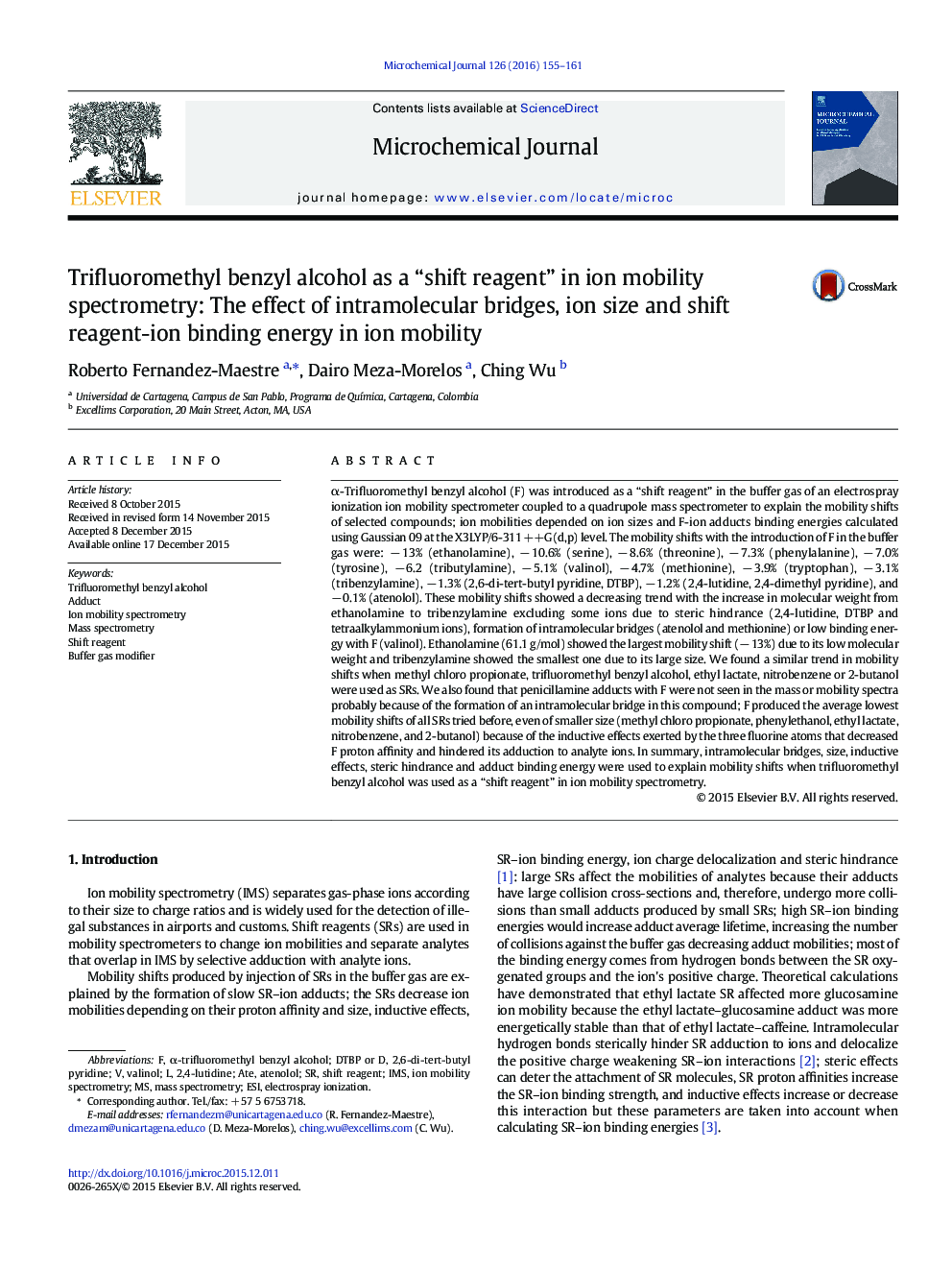| Article ID | Journal | Published Year | Pages | File Type |
|---|---|---|---|---|
| 7641458 | Microchemical Journal | 2016 | 7 Pages |
Abstract
α-Trifluoromethyl benzyl alcohol (F) was introduced as a “shift reagent” in the buffer gas of an electrospray ionization ion mobility spectrometer coupled to a quadrupole mass spectrometer to explain the mobility shifts of selected compounds; ion mobilities depended on ion sizes and F-ion adducts binding energies calculated using Gaussian 09 at the X3LYP/6-311 ++G(d,p) level. The mobility shifts with the introduction of F in the buffer gas were: â 13% (ethanolamine), â 10.6% (serine), â 8.6% (threonine), â 7.3% (phenylalanine), â 7.0% (tyrosine), â 6.2 (tributylamine), â 5.1% (valinol), â 4.7% (methionine), â 3.9% (tryptophan), â 3.1% (tribenzylamine), â 1.3% (2,6-di-tert-butyl pyridine, DTBP), â 1.2% (2,4-lutidine, 2,4-dimethyl pyridine), and â 0.1% (atenolol). These mobility shifts showed a decreasing trend with the increase in molecular weight from ethanolamine to tribenzylamine excluding some ions due to steric hindrance (2,4-lutidine, DTBP and tetraalkylammonium ions), formation of intramolecular bridges (atenolol and methionine) or low binding energy with F (valinol). Ethanolamine (61.1 g/mol) showed the largest mobility shift (â 13%) due to its low molecular weight and tribenzylamine showed the smallest one due to its large size. We found a similar trend in mobility shifts when methyl chloro propionate, trifluoromethyl benzyl alcohol, ethyl lactate, nitrobenzene or 2-butanol were used as SRs. We also found that penicillamine adducts with F were not seen in the mass or mobility spectra probably because of the formation of an intramolecular bridge in this compound; F produced the average lowest mobility shifts of all SRs tried before, even of smaller size (methyl chloro propionate, phenylethanol, ethyl lactate, nitrobenzene, and 2-butanol) because of the inductive effects exerted by the three fluorine atoms that decreased F proton affinity and hindered its adduction to analyte ions. In summary, intramolecular bridges, size, inductive effects, steric hindrance and adduct binding energy were used to explain mobility shifts when trifluoromethyl benzyl alcohol was used as a “shift reagent” in ion mobility spectrometry.
Keywords
Related Topics
Physical Sciences and Engineering
Chemistry
Analytical Chemistry
Authors
Roberto Fernandez-Maestre, Dairo Meza-Morelos, Ching Wu,
